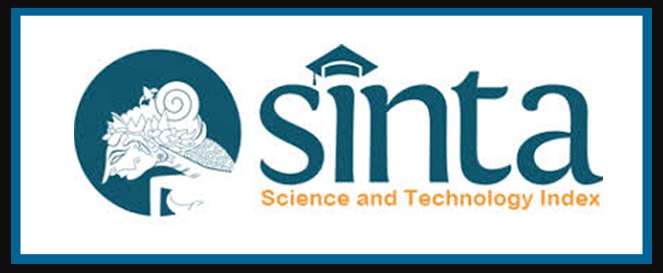Comparison of 5G Network Throughput on Varying Cluster Size
Abstract
Abstract – The development of cellular technology is accelerating, as is the exponential increase in data traffic, resulting in the creation of the following technology, namely 5G. This study looks at the throughput of the 5G network in various cluster sizes. In this study, integer frequency reuse (IFR) with a bandwidth of 100 MHz and a frequency of 3.5 GHz was used. The path loss Urban Macro (UMa) based on 3GPP 38.901 is employed in this study. The data was assessed and compared using computer simulations, and a comparison of throughput CDF values for each cluster size was obtained. When CDF = 0.9, the throughput of the N = 3 scenario is 6480 bps, which is greater than the huge throughput of the N = 4 scenario of 4860 bps and the large throughput of the N = 7 scenario of 2777 bps. According to the simulation, the cell with N = 3 cluster size has a greater throughput than the other scenarios. The cell with the smallest cluster size had the maximum throughput, whereas the largest had the lowest.
Keywords
Full Text:
PDFReferences
W. S. H. M. W. Ahmad et al., “5G Technology: Towards Dynamic Spectrum Sharing Using Cognitive Radio Networks,” IEEE Access, vol. 8, pp. 14460–14488, 2020, doi: 10.1109/ACCESS.2020.2966271.
F. Hu, B. Chen, and K. Zhu, “Full Spectrum Sharing in Cognitive Radio Networks Toward 5G: A Survey,” IEEE Access, vol. 6, pp. 15754–15776, 2018, doi: 10.1109/ACCESS.2018.2802450.
B. Xie, Z. Zhang, R. Q. Hu, G. Wu, and A. Papathanassiou, “Joint Spectral Efficiency and Energy Efficiency in FFR-Based Wireless Heterogeneous Networks,” IEEE Trans. Veh. Technol., vol. 67, no. 9, pp. 8154–8168, Sep. 2018, doi: 10.1109/TVT.2017.2701356.
S. H. Lee, M. Kim, H. Shin, and I. Lee, “Belief Propagation for Energy Efficiency Maximization in Wireless Heterogeneous Networks,” IEEE Trans. Wireless Commun., vol. 20, no. 1, pp. 56–68, Jan. 2021, doi: 10.1109/TWC.2020.3023079.
A. I. Zreikat and S. Mercan, “Performance Study of 5G Downlink Cell,” in Internet of Things, Smart Spaces, and Next Generation Networks and Systems, vol. 11660, O. Galinina, S. Andreev, S. Balandin, and Y. Koucheryavy, Eds., in Lecture Notes in Computer Science, vol. 11660. , Cham: Springer International Publishing, 2019, pp. 377–389. doi: 10.1007/978-3-030-30859-9_32.
Y. Huo, X. Dong, and W. Xu, “5G Cellular User Equipment: From Theory to Practical Hardware Design,” IEEE Access, vol. 5, pp. 13992–14010, 2017, doi: 10.1109/ACCESS.2017.2727550.
G. R. Maccartney, T. S. Rappaport, S. Sun, and S. Deng, “Indoor Office Wideband Millimeter-Wave Propagation Measurements and Channel Models at 28 and 73 GHz for Ultra-Dense 5G Wireless Networks,” IEEE Access, vol. 3, pp. 2388–2424, 2015, doi: 10.1109/ACCESS.2015.2486778.
T. Curry and R. Abbas, “5G Coverage, Prediction, and Trial Measurements,” 2020, doi: 10.48550/ARXIV.2003.09574.
T. S. Rappaport et al., “Millimeter Wave Mobile Communications for 5G Cellular: It Will Work!” IEEE Access, vol. 1, pp. 335–349, 2013, doi: 10.1109/ACCESS.2013.2260813.
M. Zahid, S. Shoaib, and M. Rizwan, “Design of MIMO Antenna System for 5G Indoor Wireless Terminals,” in 2019 International Conference on Engineering and Emerging Technologies (ICEET), Lahore, Pakistan: IEEE, Feb. 2019, pp. 1–4. doi: 10.1109/CEET1.2019.8711818.
M. Yaser, R. P. Astuti, and. A. F., “Pengaruh Posisi Penyebaran Femtocell Pada Implementasi LTE Femto yang Terintegrasi Dengan Jaringan GSM,” JETT, vol. 5, no. 2, p. 703, Mar. 2019, doi: 10.25124/jett. v5i2.1809.
DOI: http://dx.doi.org/10.22441/jte.2024.v15i1.004
Refbacks
- There are currently no refbacks.
Copyright (c) 2024 Jurnal Teknologi Elektro
Publisher Address:
Teknik Elektro, Fakultas Teknik, Universitas Mercu Buana
Jl. Raya Meruya Selatan, Kembangan, Jakarta 11650
Tlp./Fax: +62215871335
Email: [email protected]
Website of Electrical Engineering
http://teknikelektro.ft.mercubuana.ac.id
p-ISSN : 2086-9479
e-ISSN : 2621-8534
Jurnal URL : http://publikasi.mercubuana.ac.id/index.php/jte
Jurnal DOI: 10.22441/jte

Ciptaan disebarluaskan di bawah Lisensi Creative Commons Atribusi-NonKomersial 4.0 Internasional.






